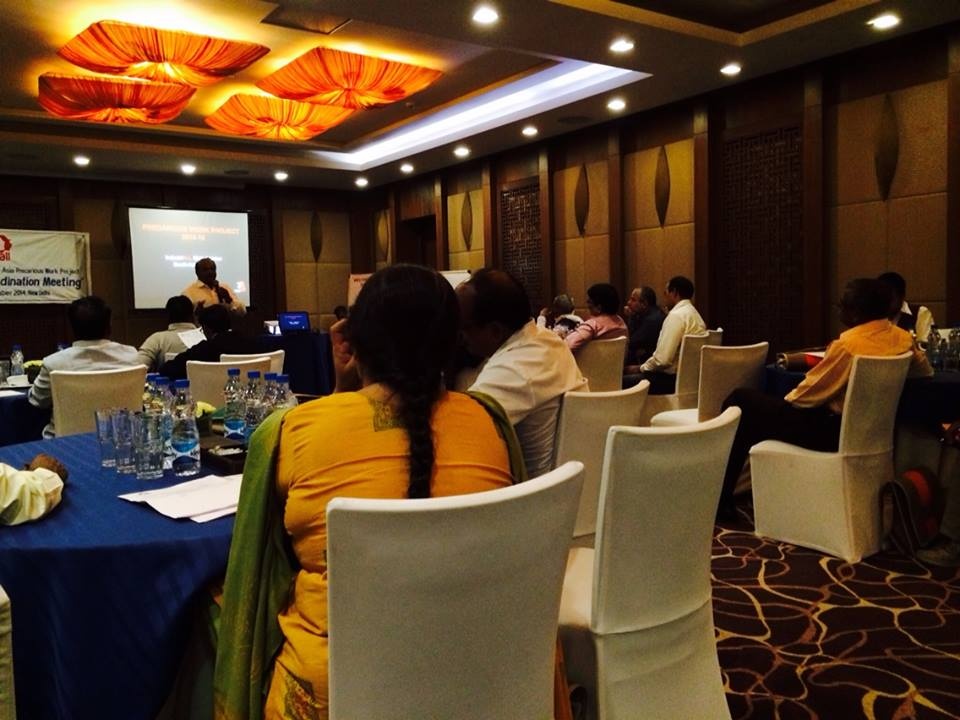Read this article in:
English
28 November, 2014Representatives from IndustriALL Global Union affiliates in India and Sri Lanka have developed a strategy to combat precarious work, in a regional coordination meeting in New Delhi on 22 to 23 November 2014.
The meeting was convened as part of the joint project between IndustriALL and Dutch affiliate FNV to tackle precarious work in South Asia. Organizing activities to stop precarious work have already begun in Pakistan, Sri Lanka and India.
Sudhershan Rao Sarde, regional secretary at IndustriALL’s South Asia office, explained the growing challenges to confronting precarious work in the region. The new government in Pakistan is taking steps to privatize public sector industries such as electricity, public transport and heavy engineering. He warned that increased privatization will lead to more precarious workers and that it is essential the trade union movement takes action to organize them.
Sarde also highlighted the growing burden of legal costs in fighting trade union battles, advocating that unions should have their own legal experts to support workers in their struggles.
Mr. S D Tyagi, President of Indian affiliate, the Steel Metal & Engineering Workers Federation of Indiam (SMEFI), presented data outlining wage disparity among permanent and contract workers, and showing that contractualization causes precarious work. However, he explained that persuading contract workers to join a trade union is difficult, with fear of joining a union being the underlying cause. He also stated that convincing permanent workers to fight alongside contract workers is a tough task. Contract labour further restricts the scope of collective bargaining, making strategic confrontation against precarious work vital. He stressed that trade union unity is fundamental to fighting precarious work.
Raghukumar, a trade unionist and a practicing lawyer by profession, explained the salient features of Contract Labour (Abolition and Regulation) Act, 1970. He exposed the contradictions of the Act, showing its limitations to abolish the contract labour system and to regulate it in the interest of working class.
At the end of the meeting, participants unanimously set a target to organize more than 5000 workers within a year.
